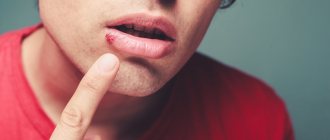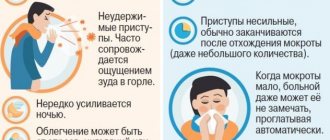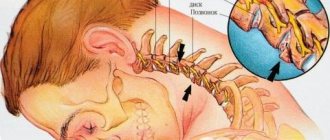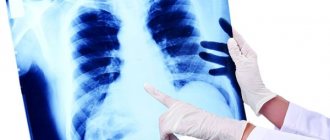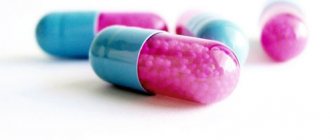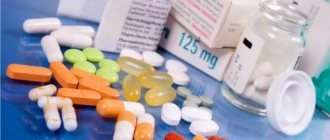Herpes zoster is caused by the same virus that causes chickenpox - Varicella Zoster. Those who had chickenpox in childhood are at increased risk, because the virus permanently settles in the human body and is activated when the defenses are reduced. Treatment of herpes zoster in adults is a complex of drugs taken internally and externally.
With herpes zoster, the picture is as follows:
- the patient experiences a burning sensation, pain in the areas of herpetic eruptions;
- temperature rises;
- headache and other symptoms of intoxication are present.
It is necessary to treat herpes zoster because it causes complications. Among them:
- inflammation of the trigeminal nerve, severe neuralgia;
- staphylococcal and streptococcal infections;
- myocarditis, periocarditis.
The doctor develops a specific treatment regimen taking into account age, the state of the immune system, and the severity of the process.
Causes of herpes zoster
Herpes zoster virus acts as a secondary infection in people who have had chickenpox. After the primary disease, pathogenic microorganisms remain in the nerve ganglia located along the spine, between the ribs and the skull.
They may not manifest themselves for a long time, but activation of the pathological process is possible upon repeated contact with a person who is infected with smallpox or a herpetic virus.
Favorable factors for relapse are:
- weakening of the immune system;
- physical injuries;
- hypothermia or overheating of the body;
- organ transplant surgery;
- presence of stress;
- surgical intervention;
- HIV infection;
- the presence of cancerous tumors;
- hepatitis;
- physiological changes in the body due to age;
- infectious diseases;
- therapy with hormonal agents;
- radiation exposure or chemotherapy for cancerous tumors;
- hard physical labor;
- presence of syphilis;
- blood poisoning due to sepsis;
- development of tuberculosis;
- inflammation of the meninges due to meningitis;
- ARVI;
- pathological processes in the liver;
- vitamin deficiency;
- pregnancy;
- consumption of alcoholic beverages;
- presence of diabetes mellitus;
- metal poisoning;
- presence of heart failure.
Origin of the disease
The disease owes its origin to the varicella zoster virus, which, when it first encounters the body, causes ordinary chickenpox. Then the virus, without disappearing anywhere, settles in human nerve cells and remains there in a dormant state.
There are several reasons that contribute to the awakening of the virus and the occurrence of shingles.
Let's look at some of them:
- constantly being in a state of stress;
- infections that undermine the immune system (influenza virus, rhinovirus infections, etc.);
- prolonged hypothermia;
- taking medications that reduce immunity;
- surgeries, chemotherapy courses, antidepressant treatment courses and other similar sources;
- abuse of solarium and sunbathing;
- HIV and AIDS.
That is, several factors influence the occurrence of herpes. And all of them may not become the real cause, but only a source of development. The risk group includes people who have already had chickenpox with a weakened immune system. The first time someone gets chickenpox is usually in childhood. The disease is transmitted by airborne droplets. The second time it appears extremely rarely and, as a rule, in old age.
Is herpes zoster contagious?
Herpes zoster, the symptoms and treatment of which are presented in this article, is a contagious disease. The route of transmission is airborne or contact. The pathology can also be transmitted from an infected pregnant woman to her fetus. Carriers of the disease are people who are infected with herpes zoster, as well as chickenpox.
The period during which a sick person becomes a spreader of the virus is considered to be the second day before the rash appears. The patient ceases to be infectious during the period when the crusts begin to peel off. People who have not suffered from the disease in childhood or are not immune to the virus are mostly susceptible to infection.
Preventive actions
Avoiding the disease is not only possible, but also necessary. The less stress the body experiences during the pain symptoms of the disease, the better it will be for you and for the immune system in general. What is necessary to avoid the onset of the disease?
The main way to prevent herpes is to strengthen your immune system always and everywhere. This can be achieved by maintaining a healthy lifestyle and proper nutrition. Additionally, they take vitamins in medicinal form or periodically drink Echinacea.
For people over 60 years of age, special vaccinations against manifestations of the zoster virus are carried out. It does not matter whether such people had chickenpox or herpes zoster or not. The most unpleasant consequence that can complicate the disease is the development of meningitis. This is a fairly serious brain disease that is practically untreatable. People are more likely to suffer from neuralgia after having herpes zoster. To prevent this, it is necessary to comply with all the reasons mentioned in the material. This is not easy to do, but in combination with strengthening the immune system, the manifestation of the disease can be avoided.
Symptoms of herpes zoster
Neoplasms are accompanied by:
- pain;
- itching;
- general weakness.
The clinical picture of the pathology varies depending on the stage of the disease.
The presence of the disease is indicated by the following signs:
- temperature increase;
- presence of fever;
- asthenic condition;
- decreased performance;
- the appearance of a rash on the skin.
The last symptom acts as a characteristic sign.
The rash has some distinctive features:
- Formed along the nerve trunks.
- Most often localized in the back, abdomen, sides and face.
- At first it looks like pigment spots with a diameter of 5 cm, which are colored pink. Later, these spots transform into small blisters with serous contents. The diameter is reduced to 3 cm.
- Clusters can be different. They fit tightly to each other and, as a rule, are arranged linearly.
- The contents of the bubbles become cloudy. After some time, the bubbles turn into crusts that fall off.
- Pigment spots form in place of the crusts.
initial stage
The duration of the initial stage of pathology is 3-5 days. However, the signs are blurred and resemble the symptoms of common ARVI, influenza and other diseases of a similar series.
Herpes zoster, the symptoms and treatment of which are described in this article, at the initial stage can cause:
- general weakness;
- migraine;
- fatigue;
- digestive problems;
- urinary disorder;
- increased size of lymph nodes in the affected area;
- decreased sensitivity in inflamed areas of the skin;
- itching in the area of nerve endings where viruses are localized.
In rare cases, the initial stage is associated with pain. They can be burning or stabbing in nature.
Acute period
The second phase is characterized by acute manifestations of pathology. In some patients, the disease initially develops in an acute form, which is explained by a weakening of the immune system and the rapid spread of infection in the body. Symptoms of the acute period are characterized by the presence of skin rashes. They are localized along the affected nerve fiber pathologies.
The diameter of the bubbles is 2-5 mm. Initially, tissue swelling occurs in this area. At the site of redness, bubbles or vesicles form within 3-5 days. Sometimes the development time of neoplasms can be increased or shortened. In rare cases, rashes make themselves felt 2-3 weeks after the onset of the pathology.
Herpes zoster in the acute phase is associated with intense skin itching. In parallel with the appearance of rashes, acute pain of a neuralgic nature occurs. Sometimes the pain is not so pronounced. In general, experts do not establish a relationship between the intensity of pain and the degree of manifestation of rashes.
As a rule, pain bothers the patient at night or during rest periods.
Herpes zoster.
Having recognized the symptoms, it is important to prescribe treatment, as bad consequences may occur. It's better to see a doctor. They are usually felt with slight touch to the affected area and intensify with movement. There is often a loss of sensation in some skin areas. Also, many patients note an increase in manifestations associated with general intoxication of the body.
The severity of pain does not always depend on the number of bubbles, since the pathology is associated with the development of infection in the nerve tissues. This explains the loss of sensation in the affected areas of the skin. The liquid contained in the bubbles becomes cloudy after 2-3 days. In the case of a bacterial infection, the disease becomes purulent in nature.
Crust formation period
At the third stage, approximately 2 weeks after the onset of the disease, crusts appear. After some time, they disappear, after which the skin area becomes covered with pigment spots. The spots disappear over time.
Homeopathy
Allopathic doctors are sometimes prejudiced against homeopathic medicines. However, their effectiveness has been proven by many years of use. The principle of action of a homeopathic medicine is different from a traditional allopathic one: the essence of treatment is not to destroy the pathogens that caused the disease of any one organ, but to restore the body’s ability to heal itself.
Homeopathy for herpes zoster is:
- thuja;
- Nitricum acidum;
- graphite.
Medicines are prescribed only by a doctor who has undergone special training! Homeopathy treatment is combined with the use of traditional drugs recognized by official medicine.
Shingles lasts up to 3 weeks. Sometimes the healing process is delayed. Much depends on the state of the immune system, on the body’s ability to adequately respond to treatment. It is important to prevent complications, to prevent the appearance of postherpetic neuralgia, which is difficult to combat.
After the acute manifestations are relieved, physiotherapy is prescribed: phonophoresis, ultrasound. Hardening is useful, which begins with dousing with warm and hot water alternately, gradually increasing the temperature contrast. Prevention:
- control of chronic diseases;
- preventing relapses.
A vaccine has been developed that protects humans 100% against Varicella Zoster. But they vaccinate those who have not had chickenpox, which means they do not have the virus in their blood that causes shingles. The task of the rest is to increase immunity. This is the main measure to prevent herpetic lichen. When signs of the disease appear, treatment is started immediately, which increases the chances of a mild attack.
5.0
06
Atypical symptoms
Herpes zoster can manifest itself in atypical forms. The symptoms and treatment are different in this case.
Signs of atypical forms include:
- Manifestation of neurological markers in the absence of vesicles.
- Development of gangrene . Often this symptom manifests itself in severe immunodeficiency and is characterized by a profuse rash that constantly changes location.
- Development of the bladder form . The vesicles grow, group and cover a large area of the skin. Visually, the borders of the rash look torn.
- Development of the generalized form . It is caused by a dysfunction of the immune system. After the appearance of typical rashes, herpes begins to cover large areas of the skin and mucous membranes.
- Manifestation of the bullous form . It is expressed in the combination of vesicles into single large papules.
Photo of herpes zoster: what it looks like
Primary infection with lumbar lichen manifests itself in the form of chickenpox. Almost all parts of the body are covered with blisters of varying sizes. The rash is not localized in one place, but is chaotic.
One of the first signs of the appearance of herpes zoster is considered to be redness of the skin in places where nerve nodules accumulate. The affected area is very itchy, painful and itchy.
Blisters form at the site of redness, and the skin around them becomes purple in color.
Content may be difficult to view
One of the dangerous places for the localization of creeping lichen is the eyes. Its formation can directly affect vision and serve as a source of infections in the eye mucosa.
Content may be difficult to view
Diagnostics
Herpes zoster, the symptoms and treatment of which cannot be ignored, requires differential diagnosis with pathologies such as erysipelas and eczema. Primary diagnosis of pathology is carried out by a dermatovenerologist.
To determine the virus use:
- microscopy;
- serology;
- immunofluorescent method;
- biopsy;
- PCR.
Anesthesia
Rashes on the body and neck are accompanied by pain, which intensifies with any touch or contact with clothing. Acute pain can be relieved with non-steroidal anti-inflammatory drugs. The most pronounced analgesic effect is found in Ketorolac and Diclofenac . I use them in the form of tablets, but in case of severe pain, the medication can be injected into the muscle for a quick onset of action.
Painkillers of this group, when used for a long time, can provoke the development of non-steroidal gastric ulcers.
Patients with gastritis, gastric or duodenal ulcers are not recommended to use PVS for more than 3 days. In other cases, use up to 7 days is allowed.
Pain with herpetic lesions is different in that its appearance is less associated with an inflammatory reaction. This is a manifestation of damage to the nerve processes, which is why this pain is called neuronal. To eliminate it, ganglion blockers are prescribed, for example, Gangleron. It is used in the form of solutions for intramuscular administration or capsules for oral administration. The duration of treatment is 10-15 days, the daily dosage depends on the severity of the pain syndrome.
The effectiveness of the anticonvulsant drug Carbamazepine has been proven if shingles appears on the face.
In this case, it affects the Gasserian node, from which the branches of the trigeminal nerve emerge. The ophthalmic branch is predominantly affected. The consequence of such a complication may be paralysis of the muscles of the head (most often facial expression), and eye disorders. Carbamazepine reduces pathological innervation, but its effect is delayed and manifests itself after a few days. The dose is raised and then reduced gradually.
Treatment of herpes zoster
Therapy for herpes zoster involves a comprehensive approach, including stimulation of the immune system, taking vitamins and using antiviral drugs. Treatment of herpes zoster in adult patients is much more difficult than in adolescents, who may recover without therapy.
Treatment is carried out immediately after the first signs of pathology appear. Before using medications, consultation with a specialist is required.
Treatment in a hospital setting is indicated in certain cases when treatment at home can cause complications and progression of the pathology, including death.
These conditions include:
- generalized form of pathology with multiple areas of skin lesions;
- development of encephalitis of herpetic nature;
- eye damage;
- patient age over 70 years;
- malfunction of the immune system;
- HIV infection;
- the presence of renal or liver failure, which affects the level of effectiveness of medications.
Systemic drugs, antibiotics
If pyoderma develops or joins the underlying pathology of the infectious process, antibiotics are prescribed. Gentamicin, Zinnat, Oxacillin, Suprax are prescribed. Antiviral drugs that are taken orally include Acyclovir, Valtrex, Famvir, and Valacyclovir. These drugs fight the virus from the inside.
Taking antihistamines is indicated. They relieve itching, which sometimes becomes painful for the patient. Regardless of the location of the rash, the skin at the site of its appearance begins to hurt even with a slight touch. Antihistamines include Suprastin, Alertek, and Tavegil. When treating herpes, it is necessary to take vitamin complexes.
| Vitamin | Action |
| B vitamins | They can be prescribed both in tablets and in injections. In addition to healing the skin, vitamin therapy in combination with medications ensures the elimination of pain in combination with medications. |
| Vitamin C | It helps strengthen the immune system. |
Topical medications
Topical antiviral drugs are also used. They allow you to eliminate the rash in the shortest possible time. Among the drugs in this series, Acyclovir, Zovirax, and Panavir should be highlighted.
Brilliant green is used to dry the crusts.
Non-steroidal drugs are used to relieve pain. They fight viruses and eliminate pain. They also have an anti-inflammatory effect. Of these, Acyclovir, Zovirax, Vovirax should be noted.
Creams containing antiviral components contribute to:
- slowing down the development of pathology;
- preventing possible complications;
- reduction of swelling;
- reducing the number of rashes;
- reducing the intensity of pain and discomfort.
Most often, specialists resort to prescribing Acyclovir. The ointment is highly effective and low cost. To relieve pain, ointments containing lidocaine are often prescribed. Among the drugs with an analgesic effect, Nimesil, Meloxicam, and Naproxen should be highlighted.
With herpes zoster, the morphology of the skin is significantly disrupted. This serves as a favorable environment for the proliferation of fungi and bacteria. In order to eliminate such manifestations and stop infections, ointments containing antibiotics are prescribed when treating adult patients. The optimal remedy is selected by the doctor. The stage of pathology and the degree of skin damage are taken into account.
Folk remedies
Herpes zoster, the symptoms and treatment of which are described earlier in the article, can also be eliminated through traditional medicine recipes. Their use is advisable after the blisters have dried. In case of acute development of the pathological process of the neoplasm, it is more advisable to cauterize it with brilliant green.
Traditional medicine offers the following recipes:
- Take 1 tbsp. l. immortelle. Dry herb is brewed with 1 cup of boiling water and infused for 1 hour. A napkin moistened with infusion is applied to the blistered area of skin 2 times a day for 10 minutes. It is also recommended to do wiping.
- Before the flowering period in May, elm branches are taken. The green skin is removed from them. The shoots are cut and dried in sunlight. Brew like tea and drink 1/3 cup three times a day.
- Take 2 tbsp. l. burdock leaves. They are filled with 1 glass of boiling water. The mixture is infused for half an hour.
- Brew 1 tbsp. l. bitter herb with a glass of boiling water. You can use tansy, celandine, marigold. Moisten a napkin with the infusion. It is sprinkled with salt and applied to the affected area. Then cover with a towel and tie with a warm wool cloth for half an hour.
- One onion is taken. The top is cut off from it. The onion is pricked with a fork and held over the fire until fried. The vegetable is cooled to room temperature and applied to the affected areas. The applied layer of onion is cut off and the onion is fried again. This product helps dry out the crusts.
- The blistered areas are smeared with butter, and then smeared with mustard and tied with a cloth.
- Pumpkin is grated on a grater. The resulting slurry is applied to the fabric and applied to the area of the skin lesion. The compress is done at night.
- Take 100 g of honey and mix with 1 tbsp. l. ash and 3 cloves of chopped garlic. The product lubricates inflamed skin areas.
- Take 1 tbsp. l. mint. It is filled with 1 glass of boiling water. The mixture is boiled in a water bath for 20 minutes. The area affected by herpes is lubricated with the product.
- Take 2 tbsp. l. dried calendula and 2 tbsp. l. meadowsweet. The collection is poured with 500 ml of alcohol. The mixture is infused for 2 weeks. The fabric is soaked in the product and applied to the area of the rash for 15 minutes 3 times a day. The tincture is also taken orally. In this case, take 1 tbsp. l. collection and pour 100 ml of boiling water. The infusion is drunk as tea 3 times a day.
- Take 20 g of dry lemon balm and pour in 200 ml of boiling water. The mixture cools. Drink 1/4 glass 3 times a day.
- Take 2 tbsp. l. dry burdock and pour 250 ml of boiling water. Infuse for 3 hours, then strain. The resulting product is divided into 3 doses.
- Take 10 g of lemon balm root, running wheatgrass and nettle. Add 7 g of nut leaves. The herbal mixture is poured with 200 ml of cold water. Infuse for 2 hours, then boil and infuse again for 15 minutes. The strained mixture is drunk 3 times a day.
- A lemon slice is applied to the blisters. It is left for 20 minutes. This procedure helps dry out the rashes. Instead of lemon, you can use honey. They lubricate the affected areas. The honey should dry out.
Consequences
If herpes zoster penetrates deep into the skin layers, a pathological condition such as tissue necrosis is provoked. Usually the acute phase of the disease passes within a month, but neurological symptoms persist for a year.
Drugs affecting immunity
Isoprinosine is prescribed to strengthen the immune system . Its action is aimed at restoring the function of lymphocytes, increases the production of immunoglobulin G, interferon, interleukins 1 and 2, and also reduces the synthesis of cytokines that support the inflammatory response.
Isoprinosine also has an antiviral effect. It affects the synthesis of viral nucleic acids, preventing it from reproducing. When taken simultaneously, Acyclovir and Interferon-alpha enhance their effect.
Contraindicated in the following conditions:
- gout;
- stones in the kidneys;
- heart rhythm disturbances;
- children under 3 years old;
- allergy to the drug.
No studies have been conducted on the use of pregnant and breastfeeding women, therefore it is not recommended to prescribe Isoprinosine to them. Take the medicine 6-8 tablets per day for 5-10 days until the symptoms disappear. Those who experience relapses are prescribed 2 tablets for 30 days.
Complications of herpes
The consequences of the pathology are caused not only by the developing postherpetic neuralgia and extensive lesions of the skin. Most serious complications usually occur in the face, neck and eyes. But on the legs or arms, herpes, as a rule, leaves minor consequences, but the development of paralysis of the limbs is possible.
The main consequences of the pathology include:
- Paralysis . Immobility of the limbs is provoked by the localization of the infection on the arms and legs, as well as its penetration into the nerve endings.
- Eye damage . It manifests itself in the development of iritis, secondary glaucoma, keratoconjunctivitis, chorioretinitis, and neuritis of the optic nerves.
- Pyoderma . Secondary pathology develops when an infection penetrates into the affected skin areas, which provokes suppuration.
- Nervous system paralysis . The pathological condition is possible with relapse of the pathology, suggesting involvement of the facial nerve in the inflammatory process. When complications occur, symptoms such as the patient's inability to puff out his cheeks and show his teeth may appear.
- Damage to the brain nerves . It manifests itself in tinnitus, dizziness and hearing loss.
- Miscarriages and pathologies of fetal development . They can be observed in pregnant women who have been affected by herpes infection.
You may also experience:
- transverse myelitis;
- development of typical forms of herpes;
- glomerulonephritis;
- duodenitis;
- cystitis;
- arthritis;
- myocarditis;
- diaphragm paresis;
- delayed urine output;
- constipation or diarrhea;
- pneumonia;
- hepatitis;
- respiratory paralysis.
As a rule, complications develop in elderly patients and people with a weakened immune system.
Persons with the presence of:
- lymphomas;
- lymphogranulomatosis;
- peptic ulcer;
- diabetes mellitus
In the absence of complications, therapy in this category of patients lasts longer, and recovery occurs later.
Doctors consider herpetic encephalitis to be the most dangerous complication. This is a serious pathology that provokes inflammation of the meninges. The mortality rate for this disease is quite high: it accounts for half of clinical cases. Herpes zoster can also cause another dangerous complication - herpetic pneumonia, the symptoms and treatment of which are severe.
Article design: Oleg Lozinsky
Prevention
In order to prevent the spread of infection, it is recommended to limit contact with the sick person and isolate him. This is especially important if a sick person is surrounded by healthy people who have not had chickenpox and have not been vaccinated.
Compliance with personal hygiene rules plays a leading role in preventing infection and the spread of infection. You must always use only personal items when washing, performing hygiene procedures, do not wear someone else’s clothes, regularly wash your hands, etc.
Considering the fact that the disease develops against a background of weakened immunity, it is necessary to comprehensively strengthen it. To do this you should:
- engage in sports or physical therapy;
- Take regular walks in the fresh air;
- take multivitamin complexes;
- ensure sleep and rest patterns;
- avoid stressful situations;
- eat a balanced diet;
- eliminate bad habits such as drinking alcohol and smoking.
As with any disease, to prevent herpes zoster, you need to better monitor your health, take care of strengthening your immune system and follow your doctor’s recommendations.
Immunomodulatory substances
Herpes zoster must also be treated with immunomodulatory medications. They are prescribed in addition to antiviral treatment, and their action is aimed at inhibiting the vital activity of the zoster virus.
Since the task of such medications is to artificially stimulate the patient’s immune cells, they must be prescribed only in accordance with the indications and used according to the specified scheme.
Drugs in this group can be natural or synthetic. Both of them actively use herpes zoster to treat the disease. When treating pathologies caused by herpes viruses, the following have a good effect:
- "Lavomax" is a medicine based on the active element tilorone, which is obtained as a result of the synthesis of interferon. The product is produced in tablet form and is contraindicated during lactation, pregnancy and under the age of 18 years. Negative phenomena that occur during administration are insignificant. These are dyspeptic disorders, allergies and short-term chills.
- “Proteflazid” is a medicine in the form of drops, which is based on flavonoids from wild cereals that can suppress the DNA of viruses. The medication not only improves local immunity, but also has antioxidant properties and helps eliminate lipid oxidation products. The product should be used with caution during pregnancy. Contraindications to it include peptic ulcer of the gastrointestinal tract during an exacerbation and sensitivity to the components.
"Viferon"
Since herpes zoster appears when the immune system is weakened, Viferon helps to recover from the disease in a short time. This medication is approved for use in pediatrics and pregnancy. However, despite the high effectiveness of the drug, self-medication is contraindicated.
The main element in the drug is interferon - protein cells that do not allow viruses to multiply. In addition to interferon, the drug contains ascorbic acid and tocopherol-alpha. "Viferon" is produced in the form of ointments, gels and rectal suppositories.
In general, what to apply to herpes zoster and the treatment plan must be agreed upon with your doctor. Suppositories are considered more effective than ointment and gel. They are used rectally, the dosage depends on the weight and age of the patient. For adults, the medication is prescribed in the morning and evening, one suppository at a dose of 500 thousand IU. It is very important to use this remedy for 5 days. Viferon ointment is used externally; it is recommended to lubricate skin rashes.
In order for the treatment of this pathology to be as effective as possible, it is recommended to start taking it as early as possible. In addition, complex therapy is important - a combination of Viferon and antiviral agents.
This medicine has virtually no contraindications and has no side effects. In rare cases, a slight burning sensation may occur at the site of application of the ointment.
"Acyclovir"
This medication is an antiviral agent for parenteral, internal, external and local use. When treating this type of herpes, it is usually used in the form of Acyclovir 200 mg tablets. It is a synthetic analogue of an acyclic purine nucleoside. The drug has increased specificity against Herpes simplex viruses (HSV), Epstein-Barr virus (EBV), cytomegalovirus (CMV) and Varicella zoster virus (VZV). The greatest activity of the main substance is observed against HSV-1.
The mechanism of action of "Acyclovir" in herpes zoster is due to the penetration of the active element directly into cells infected with the virus and producing viral thymidine kinase, as a result of which it is phosphorylated to acyclovir monophosphate. The functionality of the virus's thymidine kinase in relation to acyclovir is much higher than the effect of intracellular enzymes on it (the volume of acyclovir monophosphate in cells is 40–100 times higher). Subsequently, acyclovir triphosphate is formed, which is a selective and extremely active inhibitor of viral DNA polymerase.
According to the instructions, Acyclovir 200 mg is prescribed parenterally and orally for the treatment of the following pathologies: recurrent and primary genital herpes of severe forms, herpes zoster (Varicella zoster), herpes simplex with damage to the skin and mucous membranes (Herpes simplex virus types 1 and 2), herpes zoster affecting the eyes.
What else can I do for treatment at home?
When treating shingles at home, it is important to pay attention to the treatment of the rash. However, the use of ointments is not recommended. Antiseptics must be applied in liquid form. Chlorhexedine is best suited for this. It can be used in any period of the disease. The product does not cause any discomfort.
In addition to treating rashes, we must not forget about personal hygiene measures. It is necessary to take a shower daily. However, detergents and washcloths should not be used on the affected areas of the body. It is better to simply rinse the affected areas with running water at room temperature. It is not recommended to use cold or hot water.
Healing of shingles in a person and its treatment with medications will not be effective without selecting the right clothing. It is best to choose natural materials - cotton or linen. Do not wear tight or tight-fitting underwear - it can cause irritation and lead to the appearance of blisters on adjacent areas of the skin.
Which doctor should I contact?
Since shingles is a manifestation of an exacerbation of a herpetic infection, if it occurs, you can contact an infectious disease specialist. In addition, a dermatologist will help with treatment. If complications develop, the patient is consulted by a neurologist or ophthalmologist.
Proper care of affected skin with shingles
In order for the treatment to be more successful, in addition to taking medications, you need to be able to properly care for the affected skin.
This will help relieve severe itching and significantly reduce soreness. Basic recommendations:
- Wash skin with rashes twice a day under running water and soap;
- During treatment, wear only loose-fitting clothes so as not to injure the skin;
- apply cold compresses to help relieve itching;
- Using a sterile elastic bandage, you can cover the affected area (if it occupies a small area).
Personal hygiene and simple care of lesions will bring a speedy recovery.
You can get rid of the disease only with the help of complex therapy. Before starting treatment, be sure to consult a doctor and confirm the expected diagnosis.
"Famciclovir teva"
This is a medicine that is produced on the basis of the substance of the same name, famciclovir. It is an antiviral agent. After oral administration, famciclovir is rapidly transformed into penciclovir, which is active against human herpes viruses, as well as cytomegalovirus and Epstein-Barr virus.
Penciclovir penetrates into infected cells, where, under the influence of viral thymidine kinase, it is quickly converted into monophosphate, which, with the participation of cellular enzymes, is converted into triphosphate. Penciclovir triphosphate stays in infected cells for more than 12 hours, suppressing the production of viral DNA in them. The concentration of this substance in uninfected cells is not higher than the minimum detectable, therefore, in therapeutic doses, penciclovir does not affect uninfected cells.
The drug Famciclovir significantly reduces the duration and intensity of postherpetic neuralgia in people with herpes zoster.
For the treatment of herpes zoster, it is recommended to take this medication in a dose of 250-500 mg. The duration and frequency of administration depend on the indications, kidney function, immune status, and the effectiveness of therapy.
The medicine should be taken as soon as possible after the onset of pathological symptoms, since in this case the therapy will be more effective.
Medicines for topical use
What else is used to treat herpes zoster? People often suffer not only from pain, but also from severe skin itching that occurs in the area of the rash. Treatment of this pathology requires the use of appropriate medications.
As a rule, they are gels, ointments and creams based on acyclovir:
- "Zovirax";
- "Gerpevir";
- "Virolex";
- "Gerperax" and others.
The category of anti-itching agents for herpes zoster also includes medications containing other active substances. These are, for example, “Viru-Merz Serol”, which is based on tromantadine hydrochloride, “Panavir” with plant extracts, “Fenistil Pencivir” based on penciclovir and others.
Types of postherpetic syndrome
The disease is conventionally divided into three main phases: acute, followed by subacute, neuralgic. Each stage has its own symptoms and duration.
Let's take a closer look:
- During the acute phase, discomfort occurs, followed by pain and blistering rashes. The pain syndrome with any irritation becomes more and more intense. The stage lasts up to 30 days.
- Soreness during the second phase can last up to 100 days even after the rash has completely disappeared. Patients complain of a dull aching pain.
- In the case when the discomfort does not go away 3 months after the disappearance of the rash characteristic of herpes zoster, then they speak of the third phase - postherpetic neuralgia.
Regardless of how the pain manifests itself and what its character is, there are three types of syndrome.
Among them:
- permanent - this type is accompanied by a strong burning sensation and pressing pain;
- periodic – the patient feels tingling and sharp shooting sensations;
- allodynic – after exposure to external factors on the affected area, burning pain appears.
There are cases when a patient exhibits different types of disease at the same time.
Duration of pain symptoms and other complications
The correct approach to treatment can eliminate most of the symptoms of herpes zoster in a fairly short time. However, in most patients, muscle pain remains even after full recovery. Such pain may last for several months.
The reason for the appearance of such symptoms lies in the destruction of nerves. It takes a long period of time to restore these tissues. This is another confirmation of the words about the need for timely treatment of the disease when the first symptoms appear.
If we compare herpes zoster and chickenpox, the latter disease occurs in a milder form and in rare cases causes various complications. In the case of lichen, problems such as the appearance of suppuration, impaired motor functions of the limbs, and paralysis of the respiratory organs can be observed.
In addition, the disease can cause blindness, facial paralysis, meningoencephalitis and provoke hepatitis.
Recurrences of herpes zoster are rare and usually occur in weakened people.
Complications such as constipation, diarrhea and urinary problems are quite common. The appearance of the disease during pregnancy can cause a miscarriage or the appearance of serious diseases in the unborn child associated with brain activity and visual organs.
Water treatments
One of the main questions that torments every person in a similar situation is whether it is possible to wash with lichen. This disease is a strict contraindication to any type of water procedures. In order to avoid further spread of the rash throughout the body, the damaged areas should never be wet.
To clean dirt on the face and neck, you can use napkins and towels soaked in a special composition. The use of products with an alcohol or soap base is allowed only if they do not cause an allergic reaction.
Peculiarities
In children, adults and pregnant women, the disease progresses differently.
In adults
Herpes zoster in adults is most often diagnosed at 50-70 years of age. It may occur with scant symptoms. Adults with immunodeficiency often develop dangerous complications. They have more pronounced symptoms of intoxication and a shorter incubation period.
In children
This pathology rarely develops in children under 15 years of age. The peak incidence occurs between 15 and 18 years of age. The pathogenesis of the rashes does not differ from that in adults.
Treatment methods are the same as for adults, but some medications are contraindicated for children. The doctor should keep this in mind when prescribing medications.
